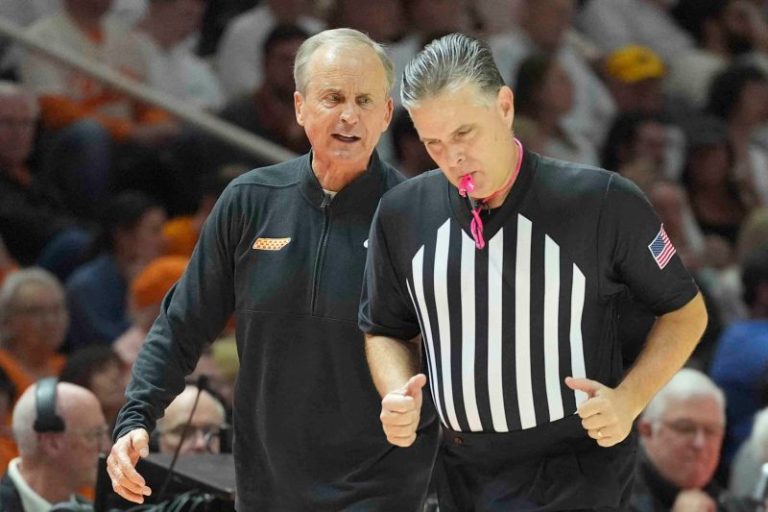
If there were a defining image of the 2024-25 men’s college basketball season, it wasn’t a buzzer-beater, a stunning upset or even the Final Four itself, when Florida completed a frantic comeback to defeat Houston in an instant classic of an NCAA championship game.
It was officials gathering around a monitor to review a call at a late stage in the game.
Two months after the season ended, the powers that be in the sport are looking to remedy the issue.
The NCAA’s playing rules oversight panel approved several changes on June 10 that will aim to “help enhance the flow of the game,” the organization announced Tuesday.
Most notable among them is the introduction of a coach’s challenge, which can be used at any point during a game to review out-of-bounds calls, basket interference and goaltending, and whether a secondary defender was in the restricted arc area underneath the basket.
Teams must have a timeout in order to use a challenge. If the challenge is successful, the team will be permitted one additional video review request for the rest of the game, including overtime. If the contested call isn’t overturned, a team can’t bring forth a challenge for the rest of the game.
The NBA has employed a similar challenge system since 2019.
Referee-initiated video reviews on out-of-bounds calls in the final minutes of games were a constant source of frustration for fans in recent years, with the deliberations regularly interrupting close, exciting games and extending the game well beyond its allotted broadcast window.
Even with the coach’s challenge, officials can still decide to turn to instant replay for timing mistakes, scoring errors, shot-clock violations, flagrant fouls and whether a shot is a 2-pointer or a 3-pointer, among other things. They can also initiate reviews for restricted-arc plays and goaltending/basket interference in the final two minutes of a game and overtime.
The advent of the coach’s challenge was one of several measures that was approved Tuesday.
The continuous motion rule has been tweaked so that a player driving with the ball who has absorbed contact can complete their step and attempt a field goal, another step that brings the college rules closer to their NBA counterparts. Players are currently only awarded free throws if they’re fouled while shooting.
Under new rules, officials will also have the option to call a Flagrant 1 foul if a player has been contacted in the groin. Previously, they could only rule it a common foul or a Flagrant 2 foul, the latter of which results in an ejection.
Perhaps the biggest change is one the NCAA ultimately didn’t implement.
In its release, the organization noted that the NCAA men’s basketball committee had conversations and “positive momentum” to move men’s games from halves to quarters. While there are logistical challenges — namely, how media timeouts would be structured during a game — the committee has recommended that Division I conferences form a joint working group to offer feedback on the potential halves-to-quarters move.
Halves are largely a relic of the men’s college game, as women’s college basketball, the NBA and international basketball all use quarters.

